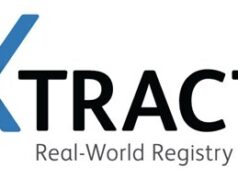
The six-month results from the full clinical cohort of the EffPAC randomised study were presented in the drug-coated balloon (DCB) abstracts session at the Cardiovascular and Interventional Radiological Society of Europe (CIRSE) 2017 conference in Copenhagen, Denmark. The data demonstrate the efficacy of iVascular’s Luminor DCB in patients with peripheral arterial disease (PAD).
EffPAC (Effectiveness of paclitaxel-coated Luminor balloon catheter vs. uncoated balloon catheter in the arteria femoralis superficialis) enrolled 171 patients at 11 German centres who were randomised to treatment with either the Luminor DCB or percutaneous transluminal angioplasty (PTA). The six-month data include a total of 153 patients (77 DCB and 76 PTA).
According to iVascular, Luminor is a paclitaxel-coated balloon with a proprietary coating, using unique nanotechnology for minimised drug loss during navigation and enhanced delivery to the artery wall. A full range is available with 0.014”, 0.018” and 0.035” guidewire compatibility, providing ultra-low profile and fast deflation time.
Ulf Teichgräber, director of the Department of Radiology of the University Hospital Jena, Germany, presented the new, primary endpoint late lumen loss and the clinical six-month results from the full cohort of the EFFPAC study demonstrating the effectiveness of Luminor DCB vs. PTA in the superficial femoral artery.
Results
The study met its primary endpoint (late lumen loss) and secondary endpoints (freedom from target lesion revascularisation; patency; and change of ankle brachial index, Rutherford stage and quality of life with high statistical significance).
- Primary endpoint revealed a late lumen loss (LLL) of 0.14mm in the DCB group vs 1.06mm in the PTA group (p<0.001).
- Target lesion revascularisation (TLR) was 1.3% (DCB) vs 17.1% (PTA)
- Rutherford stages were improved overall for 85.2% patients (DCB) vs. 75% (PTA) (p=0.021), and by three stages for 44.6% patients (DCB) vs. 27.8% (PTA)
- There were no amputations, or product-related adverse event in the DCB group.
A comparison with other published data from randomised controlled trials involving DCBs, underlined that Luminor DCB shows higher efficacy than most other available DCBs. In a press release from iVascular, Teichgräber said: “These incomparable outcomes are the result of the innovative coating technology of Luminor DCB, which is shown not only in the patency, LLL and TLR data, but also in significant improvement of patients’ clinical status”.
On 21 September 21 iVascular announced that the Luminor 14m has received the Canadian Medical Device License (MDL). Luminor DCB received the CE mark in 2013 to treat superficial femoral, popliteal and infrapopliteal arteries and is available in more than 50 countries.











